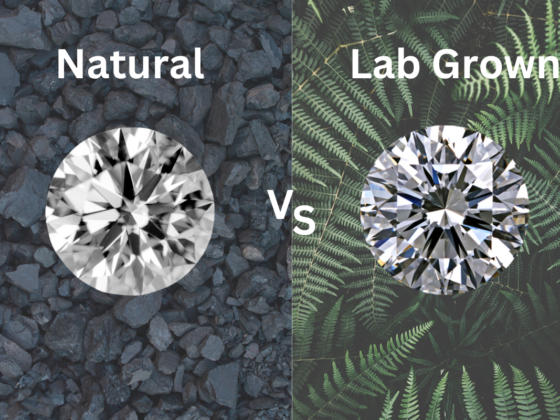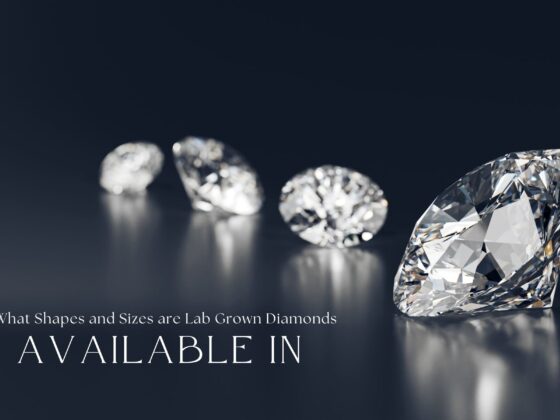The history of lab-grown diamonds is a fascinating intersection of science, innovation, and evolving consumer values, beginning in the early 20th century with initial experiments that laid the groundwork for future advancements. By the 1980s, techniques such as high-pressure, high-temperature (HPHT), and chemical vapor deposition (CVD) began to revolutionize the industry, making these synthetic gems commercially viable.
Early Experiments in Diamond Synthesis

The quest for synthetic diamonds began in the early 20th century, driven by both scientific curiosity and industrial demand. Early experiments in diamond synthesis were characterized by a range of innovative experimental techniques aimed at replicating the natural processes that form diamonds beneath the Earth’s surface. Researchers sought to understand the conditions necessary for diamond formation, particularly the high-pressure and high-temperature environments present deep within the Earth.
One pioneering technique involved the use of high-pressure apparatus, where carbon sources were subjected to extreme pressures exceeding 5 GPa and temperatures above 1,500 degrees Celsius. This method, known as the high-pressure, high-temperature (HPHT) process, was instrumental in advancing the field of diamond synthesis. In parallel, other experimental techniques, such as chemical vapor deposition (CVD), emerged, allowing for the growth of diamond films under less extreme conditions while providing greater control over the resulting diamond’s characteristics.
These early endeavors laid the groundwork for future advancements in synthetic diamond technology. Although the initial results were modest, they marked a significant step toward the eventual commercialization of lab-created diamonds, highlighting the importance of continued research and innovation in this fascinating area of materials science.
The First Commercial Lab-Grown Diamonds
In the late 20th century, the landscape of the diamond industry began to transform with the introduction of the first commercially viable man-made diamonds. The 1970s and 1980s marked a pivotal moment, as advancements in technology allowed for the successful synthesis of diamonds that could compete with their natural counterparts. The first production of these synthetic gems was primarily achieved through High-Pressure High-Temperature (HPHT) methods, which mimicked the natural conditions under which diamonds form.
By the late 1980s, companies like Diamond Technologies and later, Gemesis, emerged, bringing lab-created diamonds to the market. These early diamonds were initially met with skepticism, but as their quality improved and the processes became more refined, commercial availability began to rise. Consumers were drawn to the ethical and environmental benefits of lab-grown diamonds, as they offered an alternative to traditionally mined stones.
This shift set the stage for a growing acceptance of lab-grown diamonds in the jewelry market, influencing perceptions of value and sustainability. As public awareness increased, the foundation was laid for a burgeoning industry that would continue to evolve in the years to come.
Technological Advancements in the 1980s
Advancements in technology during the 1980s played a significant role in refining the processes used to create lab-grown diamonds. This decade marked a pivotal shift in the understanding and implementation of synthetic processes, leading to enhanced methods of crystal growth. Researchers focused on optimizing conditions that favored the formation of high-quality diamonds, which included careful control of temperature and pressure.
The development of better equipment allowed for more precise manipulation of the environmental factors essential for diamond synthesis. Innovations in reactor design facilitated the creation of larger and more consistent diamond crystals. Moreover, the exploration of different materials as substrates for crystal growth proved vital in achieving the desired characteristics in synthetic diamonds.
As a result of these technological advancements, the quality and size of lab-created diamonds improved significantly, drawing attention from both the scientific community and the jewelry industry. The 1980s established a foundation for future innovations, ensuring that lab diamonds could compete with their natural counterparts in terms of both aesthetic appeal and physical properties. This era ultimately set the stage for the evolution of lab-grown diamond production in the years to come.
The Rise of CVD and HPHT Methods

As researchers sought to enhance the quality and efficiency of lab-made diamond production, two dominant methods emerged: Chemical Vapor Deposition (CVD) and High Pressure High Temperature (HPHT). CVD techniques involve the deposition of carbon-containing gases in a controlled environment, allowing for precise crystal growth. This method has gained popularity due to its ability to produce diamonds with exceptional purity and color, meeting stringent industry standards.
Conversely, HPHT processes mimic the natural conditions under which diamonds form, applying extreme pressure and temperature to carbon sources. This approach has been traditionally favored for its ability to produce larger diamonds quickly, making it advantageous for production scalability.
Both CVD and HPHT methods have sparked significant technological innovations that have reshaped the landscape of diamond manufacturing. As competition in the market intensified, these processes not only improved diamond quality but also reduced production costs, making lab-created diamonds more accessible to consumers.
Ultimately, the rise of CVD and HPHT methods reflects a pivotal moment in the diamond industry, as producers strive to balance quality, scalability, and affordability in an increasingly competitive environment.
Market Reception and Consumer Perception
The advancements in CVD and HPHT methods have significantly influenced consumer attitudes towards man made diamonds. Increased consumer awareness has led to a shift in market reception, with many buyers valuing ethical considerations and transparency over traditional mined diamonds. As consumers become more informed, they often cite purchasing motivations that include the lower price comparison of lab-grown diamonds, which can range from 20% to 40% less than their natural counterparts.
Quality perceptions have also evolved, as laboratory-grown diamonds are virtually indistinguishable from mined ones in terms of brilliance and durability. This has facilitated market segmentation, where consumers prioritize luxury appeal and ethical sourcing equally. Celebrity endorsements further amplify this trend, as high-profile figures promoting laboratory-grown diamonds enhance their desirability and status.
As the market continues to develop, the complex interplay between ethical considerations and luxury aspirations will shape consumer choices. The growing acceptance of lab-grown diamonds indicates a transformative moment within the jewelry industry, ultimately redefining the conventions surrounding diamond ownership and gifting. This evolution demonstrates that lab-grown diamonds are not merely a trend but a significant shift towards a more conscious consumer culture.
Environmental Impact and Sustainability
Shifting the focus to environmental impact and sustainability, laboratory-grown diamonds present a more eco-friendly alternative to traditional mining practices. The extraction of natural diamonds is often associated with significant ecological degradation, including habitat destruction, soil erosion, and water pollution. In contrast, lab-grown diamonds are produced using advanced technology in controlled environments, which minimizes the disruption to natural ecosystems.
Furthermore, the production of lab-grown diamonds is aligned with sustainable sourcing principles. These diamonds require fewer resources, such as water and energy, leading to a smaller carbon footprint compared to mined diamonds. Many lab-grown diamond manufacturers are committed to eco-friendly practices, including using renewable energy sources and reducing waste during the production process.
Comparison With Natural Diamonds
When evaluating the allure of diamonds, a profound distinction emerges between lab-grown and earth mined diamonds. Lab-grown diamonds exhibit specific lab characteristics, such as identical physical and chemical compositions to their natural counterparts. However, gemological differences can be identified through advanced techniques, enabling professionals to discern between the two forms.
Ethical considerations play a pivotal role in the decision-making process for many consumers. Lab-grown diamonds are often viewed as a more responsible choice due to their sustainable sourcing practices, which mitigate the risks associated with conflict diamonds. In terms of price comparison, laboratory-grown diamonds generally offer a more affordable alternative, often costing 20-40% less than natural diamonds, making them appealing to diverse market demographics.
Quality assurance is another crucial aspect, as cultured diamonds undergo rigorous testing to confirm their authenticity and quality, instilling confidence in buyers. With increasing consumer education on these differences, more individuals are opting for lab-grown diamonds, recognizing both their ethical implications and economic advantages. This shift reflects a broader trend toward responsible consumerism, reshaping the diamond industry’s future.
The Role of Branding and Marketing
As consumers increasingly embrace lab-created stones, effective branding and marketing strategies have become essential for distinguishing these products in a competitive market. Brands must leverage innovative storytelling to communicate the unique benefits of lab diamonds, such as their environmental sustainability and conflict-free origins. By weaving narratives that resonate with consumers’ values and aspirations, companies can create a strong emotional connection that elevates their products above traditional diamonds.
Furthermore, ethical messaging plays a crucial role in appealing to today’s conscientious consumers. By highlighting the responsible sourcing and production processes associated with laboratory-grown diamonds, brands can position themselves as champions of ethical luxury. This approach not only fosters consumer trust but also aligns with a growing demand for transparency in the jewelry industry.
In addition, effective use of social media and influencer partnerships can amplify these messages, reaching broader audiences while reinforcing brand identity. As the market for lab-grown diamonds continues to expand, those companies that prioritize innovative storytelling and ethical messaging will likely find themselves well-positioned to capture the hearts and minds of discerning consumers, ensuring lasting success in a rapidly evolving landscape.
Future Trends in Lab-Grown Diamonds
Innovation is poised to shape the future of lab-grown diamonds, driving advancements in technology, production methods, and market acceptance. As the industry evolves, a more transparent supply chain will emerge, ensuring ethical sourcing and fostering consumer trust. This transparency will be complemented by increased consumer education, empowering buyers to make informed choices about their purchases.
Price trends indicate that lab-grown diamonds are becoming more affordable, making them an attractive alternative to mined diamonds. This price competitiveness, combined with their ethical advantages, enhances their investment potential, drawing interest from both consumers and investors alike.
Design innovation will also play a critical role, as manufacturers develop novel techniques to create unique and customized diamonds, catering to evolving consumer preferences. Furthermore, industry regulations will likely adapt to address market competition, ensuring fairness and standardization across the sector.
As these trends unfold, laboratory-grown diamonds are expected to solidify their position in the market, appealing to a broader audience seeking sustainable and ethically sourced luxury. The interplay of these dynamics will redefine the landscape of the diamond industry in the years to come.
FAQs
Are Lab-Grown Diamonds Chemically Identical to Natural Diamonds?
Lab-grown diamonds are chemically identical to natural diamonds, sharing the same crystal structure and composition. However, their environmental impact and market perception differ, as consumers increasingly value sustainability and ethical sourcing in their purchasing decisions.
How Do Lab-Grown Diamonds Compare in Price to Natural Diamonds?
Lab-grown diamonds typically exhibit lower price points compared to natural diamonds due to market trends and price fluctuations. Their production process reduces costs, making them an increasingly attractive option for consumers seeking affordability without compromising quality.
Can Lab-Grown Diamonds Be Distinguished From Natural Diamonds?
Lab-grown diamonds can be distinguished from natural diamonds through advanced detection methods. However, consumer perceptions often blur the lines, as both types exhibit similar physical properties, prompting ongoing discussions about authenticity and value in the market.
What Certifications Are Available for Lab-Grown Diamonds?
Lab-grown diamonds can be certified by various certification bodies adhering to gemological standards, such as the Gemological Institute of America (GIA) and the International Gemological Institute (IGI), ensuring authenticity and quality assurance for consumers.
Are There Specific Care Tips for Lab-Grown Diamonds?
To maintain lab-grown diamonds, utilize gentle cleaning methods such as mild soap and soft cloths. For storage, ensure they are kept separately from other jewelry to prevent scratches, ideally in a fabric-lined box or pouch.








